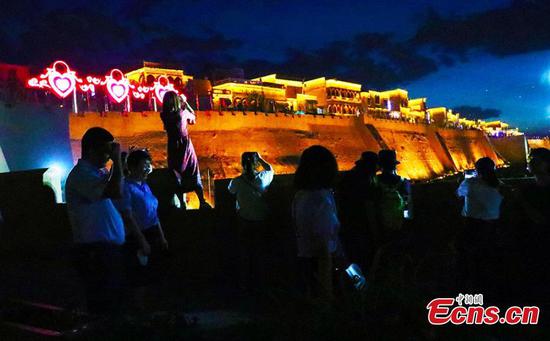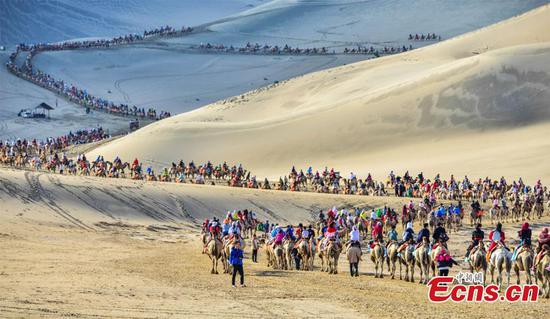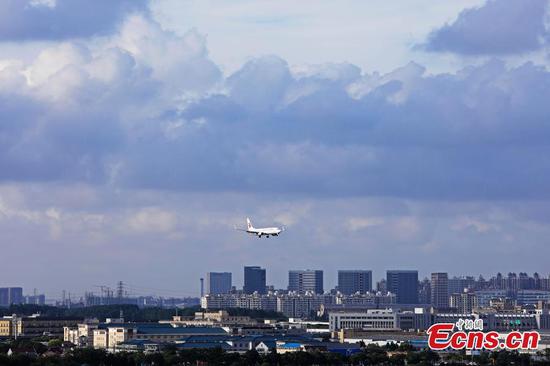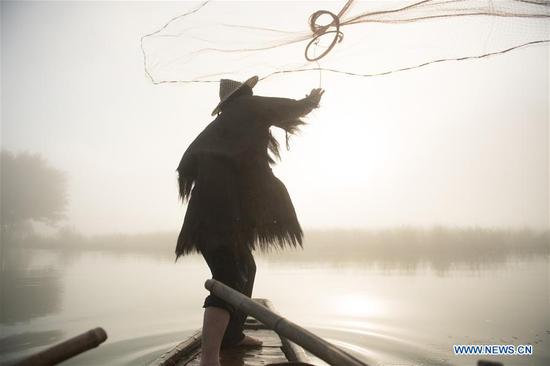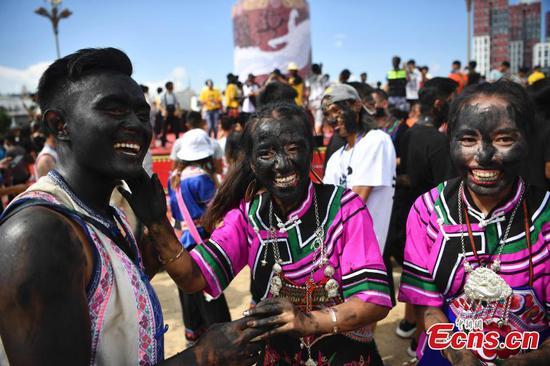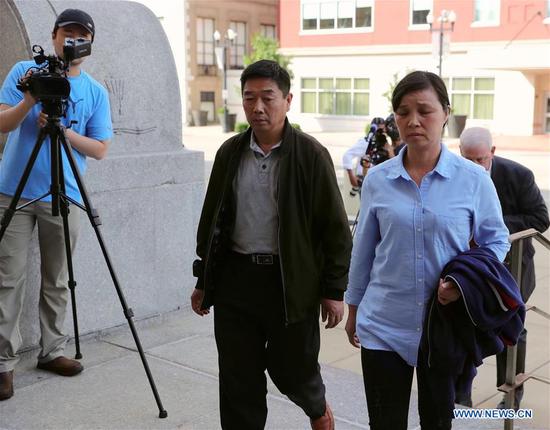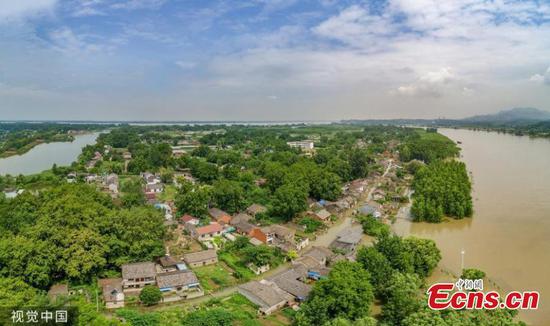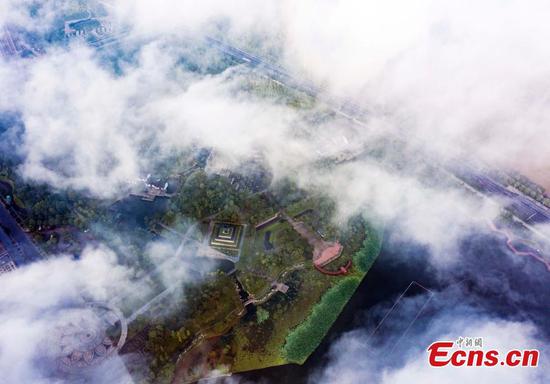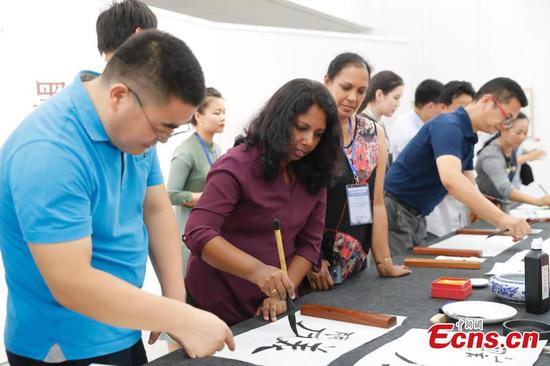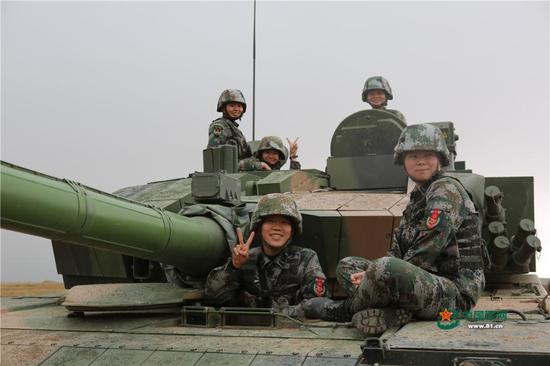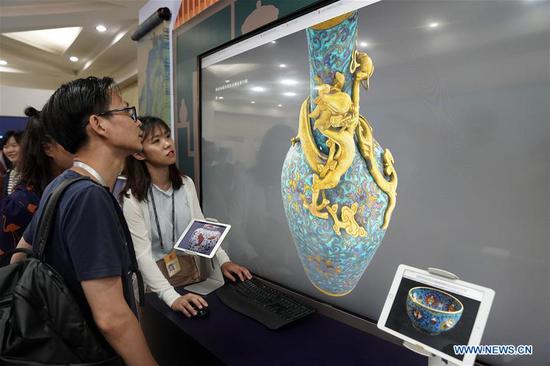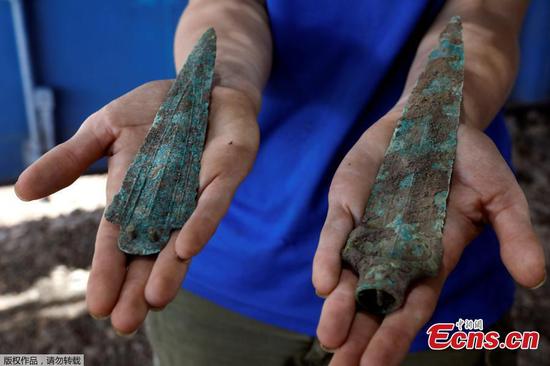The State Council Information Office of the People's Republic of China published a white paper titled "Historical Matters Concerning Xinjiang" on Sunday.
The following is the full text:
Historical Matters Concerning Xinjiang
The State Council Information Office of
the People’s Republic of China
July 2019
Contents
Preamble
I. Xinjiang Has Long Been an Inseparable Part of Chinese Territory
II. Xinjiang Has Never Been “East Turkistan”
III. The Ethnic Groups in Xinjiang Are Part of the Chinese Nation
IV. The Uygur Ethnic Group Formed Through a Long Process of Migration and Integration
V. Xinjiang Ethnic Cultures Are Part of Chinese Culture
VI. Multiple Religions Have Long Coexisted in Xinjiang
VII. Islam Is Neither an Indigenous nor the Sole Belief System of the Uygurs
Conclusion
Appendix: A Brief Chronology of Chinese History
Contents
Preamble
The Xinjiang Uygur Autonomous Region is situated in northwest China and in the hinterland of the Eurasian Continent. It borders eight countries: Mongolia, Russia, Kazakhstan, Kyrgyzstan, Tajikistan, Afghanistan, Pakistan, and India. It was a place where the famed Silk Road connected ancient China with the rest of the world and where diverse cultures gathered.
China is a unified multiethnic country, and the various ethnic groups in Xinjiang have long been part of the Chinese nation. Throughout its long history, Xinjiang’s development has been closely related to that of China. However, in more recent times, hostile forces in and outside China, especially separatists, religious extremists and terrorists, have tried to split China and break it apart by distorting history and facts. They deny the fact that Xinjiang has been a part of China’s territory where various ethnic groups have lived together, many cultures have communicated with each other, and different religions have coexisted since ancient times. They call Xinjiang “East Turkistan” and clamor for independence. They attempt to separate ethnic groups in Xinjiang from the Chinese nation and ethnic cultures in the region from the diverse but integrated Chinese culture.
History cannot be tampered with and facts are indisputable. Xinjiang has long been an inseparable part of Chinese territory; never has it been the so-called East Turkistan. The Uygur ethnic group came into being through a long process of migration and integration; it is part of the Chinese nation. In Xinjiang, different cultures and religions coexist, and ethnic cultures have been fostered and developed in the embrace of the Chinese civilization. Islam is neither an indigenous nor the sole belief system of the Uygur people. It has taken root in the Chinese culture and developed soundly in China.
I. Xinjiang Has Long Been an Inseparable Part of Chinese Territory
A unified multiethnic country, China came into being as a result of economic and social development. Historically, the East Asia continent that nurtured the ancestors of today’s Chinese nation had both farming and nomadic herding areas. Different ethnic groups with diverse livelihoods and lifestyles communicated with and complemented each other, and migrated and lived together. They experienced both conflict and integration, and pushed China to move forward and become a unified multiethnic country.
Xia, Shang, and Zhou, the three earliest dynasties in Chinese history, emerged successively in the Central Plains, a vast area covering the middle and lower reaches of the Yellow River. They integrated with neighboring clans, tribes, and tribal alliances into bigger ethnic groups, called by the joint name Zhuxia or Huaxia. From the Spring and Autumn Period to the Warring States Period, Huaxia groups continued to communicate and blend with neighboring clans, tribes, and tribal alliances, and gradually seven regions – Qi, Chu, Yan, Han, Zhao, Wei, and Qin – came into being. These maintained contact with neighboring ethnic groups such as Yi in the east, Man in the south, Rong in the west, and Di in the north. In 221 BC, the First Emperor of Qin founded the first unified feudal dynasty. In 202 BC, Liu Bang, later known as Emperor Gaozu, set up another unified feudal dynasty – Han.
From the Han to the middle and late Qing, the vast areas both north and south of the Tianshan Mountains in Xinjiang were called the Western Regions. Xinjiang was formally included in Chinese territory in the Han Dynasty. Later dynasties in the Central Plains, some strong, some weak, kept closer or looser contact with the Western Regions, and the central authorities exercised tighter or slacker administration over Xinjiang. But all of these dynasties regarded the Western Regions as part of Chinese territory and exercised the right of jurisdiction over Xinjiang. Through the long formative process of turning China into a unified multiethnic country, many ethnic groups worked together to develop its vast territories and build the diverse Chinese nation. The unification of multiethnic China was a result of common efforts made by the whole Chinese nation, including the ethnic groups in Xinjiang.
In the early Western Han Dynasty, the nomadic Xiongnu people in northern China controlled the Western Regions, and attacked the Central Plains from time to time. After Emperor Wudi took the throne, he adopted a series of military and political responses. In 138 BC and 119 BC, the Western Han government dispatched Zhang Qian as an envoy to the Western Regions, who convinced the Rouzhi and Wusun peoples to form an alliance to fight the Xiongnu. On three occasions between 127 BC and 119 BC, the Western Han authorities dispatched forces that inflicted heavy losses on the Xiongnu. They then set up four prefectures – Wuwei, Zhangye, Jiuquan and Dunhuang – on key passageways from the Central Plains to the Western Regions. In 101 BC, the Western Han began to send garrison troops to transform wastelands to arable land in Luntai and some other places, and appointed local officers to command them. In 60 BC, the Xiongnu king who ruled the areas north of the eastern Tianshan Mountains surrendered to the Han government, which thereby incorporated the Western Regions into Han’s territory. In the same year, the Western Regions Frontier Command was established to exercise military and political administration over the Western Regions. In 123, during the Eastern Han Dynasty, the Western Regions Frontier Command was replaced by the Western Regions Garrison Command, which continued to administer the Western Regions.
The Kingdom of Wei of the Three Kingdoms Period adopted the Han system, stationing a garrison commander to rule the Western Regions. The Western Jin Dynasty stationed a garrison commander and a governor to exercise military and political administration over the Western Regions. In the Three Kingdoms Period and the Jin Dynasty, the Xiongnu, Xianbei, Dingling, and Wuhuan in northern China moved inland and finally integrated with the Han ethnic group. In 327, the Former Liang regime spread the system of prefectures and counties to the Western Regions and set up the Gaochang Prefecture in the Turpan Basin. From 460 to 640, the Uighur Kingdom of Gaochangcentered in the Turpan Basin and with the Han people as the main population was ruled successively by the Kan, Zhang, Ma, and Qu families.
The Sui Dynasty ended the long-term division of the Central Plains, and expanded the areas in the Western Regions that adopted the system of prefectures and counties. The Turk, Tuyuhun, Dangxiang, Jialiangyi, Fuguo and some other ethnic groups submitted to the authority of the Sui. In the Tang Dynasty, the central government strengthened its rule over the Western Regions by establishing the Grand Anxi Frontier Command and the Grand Beiting Frontier Command to administer the Western Regions. The ruling clan of the Kingdom of Khotan (232 BC-AD 1006) asserted that it was related by blood to the emperor of the Tang Dynasty and changed its surname to Li, the surname of the Tang emperor. In the Song Dynasty, local regimes of the Western Regions paid tribute to the Song. The king of Uighur Kingdom of Gaochanghonored the Song emperor as “Uncle” and called himself “Nephew in the Western Regions”, while the Kara-Khanid Khanate (840-1212) sent envoys many times to pay tribute to the Song court.
In the Yuan Dynasty, the central government strengthened administration over the Western Regions by establishing the Beiting Command and the Pacification Commissioner’s Office to manage military and political affairs. In 1251, the system of administrative provinces was adopted in the Western Regions. In the Ming Dynasty, the imperial court set up the Hami Garrison Command to manage local affairs, and then set up six garrison cities – Anding, Aduan, Quxian, Handong, ChijinMengu, and Shazhou – between the Jiayu Pass and Hami to support local administration. In the Qing Dynasty, the imperial court quelled a rebellion launched by the Junggar regime, defining the northwestern border of China. It then adopted more systematic policies for governing Xinjiang. In 1762, the Qing government established the post of Ili General and adopted a mechanism combining military and political administration. In 1884, it established a province and renamed the Western Regions as “Xinjiang”, meaning “land newly returned”. In 1912, as a response to the Revolution of 1911, Xinjiang became a province of the Republic of China.
In 1949, the People’s Republic of China (PRC) was founded, and Xinjiang was liberated peacefully. In 1955, the Xinjiang Uygur Autonomous Region was established. Under the leadership of the Communist Party of China, all ethnic groups in Xinjiang united and worked with other groups across the country, opening a period of unprecedented prosperity for the region.
In the long history, Chinese territory has experienced periods of division and unification, but unification and development have always been the overall trend. Small kingdoms or separatist regimes existed in the Central Plains in different periods; similarly, Xinjiang also witnessed several local regimes dividing the region. Nevertheless, no matter how long these regimes divided Xinjiang and however serious the situation was, the region was ultimately united. In different periods in Xinjiang there were city-states, nomadic states, princedoms, kingdoms, khanates, vassal states, tributary states and some other forms of local regime, such as the 36 states of the Western Regions in the Han Dynasty, the Kara-Khanid Khanate and the Uighur Kingdom of Gaochang in the Song Dynasty, the Chagatai Khanate in the Yuan Dynasty, and the Yarkant Khanate in the Ming Dynasty. But these were all local regimes within the territory of China; they were never independent countries. These local regimes had a strong sense of national identity, and acknowledged themselves as branches or vassals of the Central Plains authorities.
A Comprehensive Dictionary of Turkic Languages, written by Turkic scholar Mahmud al-Kashgari in the 11th century, states that China [often referred to as Qin in ancient times] was composed of three parts, namely Upper Qin (the area of the Northern Song Dynasty), Middle Qin (the area of the Liao Dynasty), and Lower Qin (the area of the Kara-Khanid Khanate). In the Travels to the West of Master of Eternal Spring QiuChuji, the Han people were called the Tavghaq; and in A Comprehensive Dictionary of Turkic Languages, the Uighur people were called Tat Tavghaq, or the Uighurs of China. The coins of the Kara-Khanid Khanate were often inscribed with such titles as TavghaqBughra Khan, King from Qin, and King from Qin and the East to indicate that the khanate was part of China.











